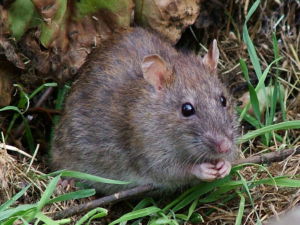Students and teachers aren’t the only ones roaming these halls. According to Redwood custodians and other personnel, rodents have established their presence on campus.
“I’m not an expert, but I’ve seen both [rats and mice], probably more mice than rats,” said Lead Custodian Tim Mullery. “Sometimes they’re brand new babies and the biggest one I’ve seen was probably a foot-and-a-half long.”
Mullery listed room 306 (a Drama room), the 500s and the pool area as rodent hotspots, while Redwood Systems Specialist Les Gill has encountered mice in both of the parking lots and in the library.

“I kept hearing the scurrying, so I just said, ‘What the heck,’” Gill said as he recounted an experience he had in the library over the summer. “I lifted up a little panel to take a look — right there were two little guys running around.”
Mullery stated that rodent traps have been set in secluded locations all around Redwood and are checked daily by custodians. The traps are often found to be effective.
“This time of year, we see mice once or twice a week,” Mullery said. “Actually, we don’t really see them, but we do catch them.”
Mullery speculated that more food left in classrooms due to increased enrollment and recent rainy weather patterns have drawn in mice and rats. However, he added that the amount of rodents that the custodial staff has captured lately is consistent with the usual rate.
A webpage found on the Environmental Protection Agency (EPA) website, titled “Rodents and Schools,” suggests simple ways to prevent rodent infestations in schools everywhere. These methods include the limiting of food brought into the classroom and the consistent removal of all garbage.
The EPA site also states that rodent infestations can potentially spread up to 35 diseases, which are transferred directly through the handling of rodents, contact with rodent feces, urine or saliva, rodent bites, or indirectly through ticks, mites or fleas that have fed on an infected rodent.
“I’m not a fan of them,” Mullery said. “I would assume that it’s normal to a point to have pests in the area, but we try to make sure students don’t see them too often. Once in a blue moon a student will see one.”
From his experience working in other high schools, Gill reported that Redwood is not alone in regards to having pests on campus.
“I’ve been working in schools for a decade now and there’s always going to be mice,” Gill said. “That’s just how it is. They’re attracted to places where there are people, kids and food.”
According to Gill, there are worse problems to have than the occasional finding of a mouse or rat.
“My last school had roaches,” Gill said. “You’d rather have mice than roaches, trust me.”

















